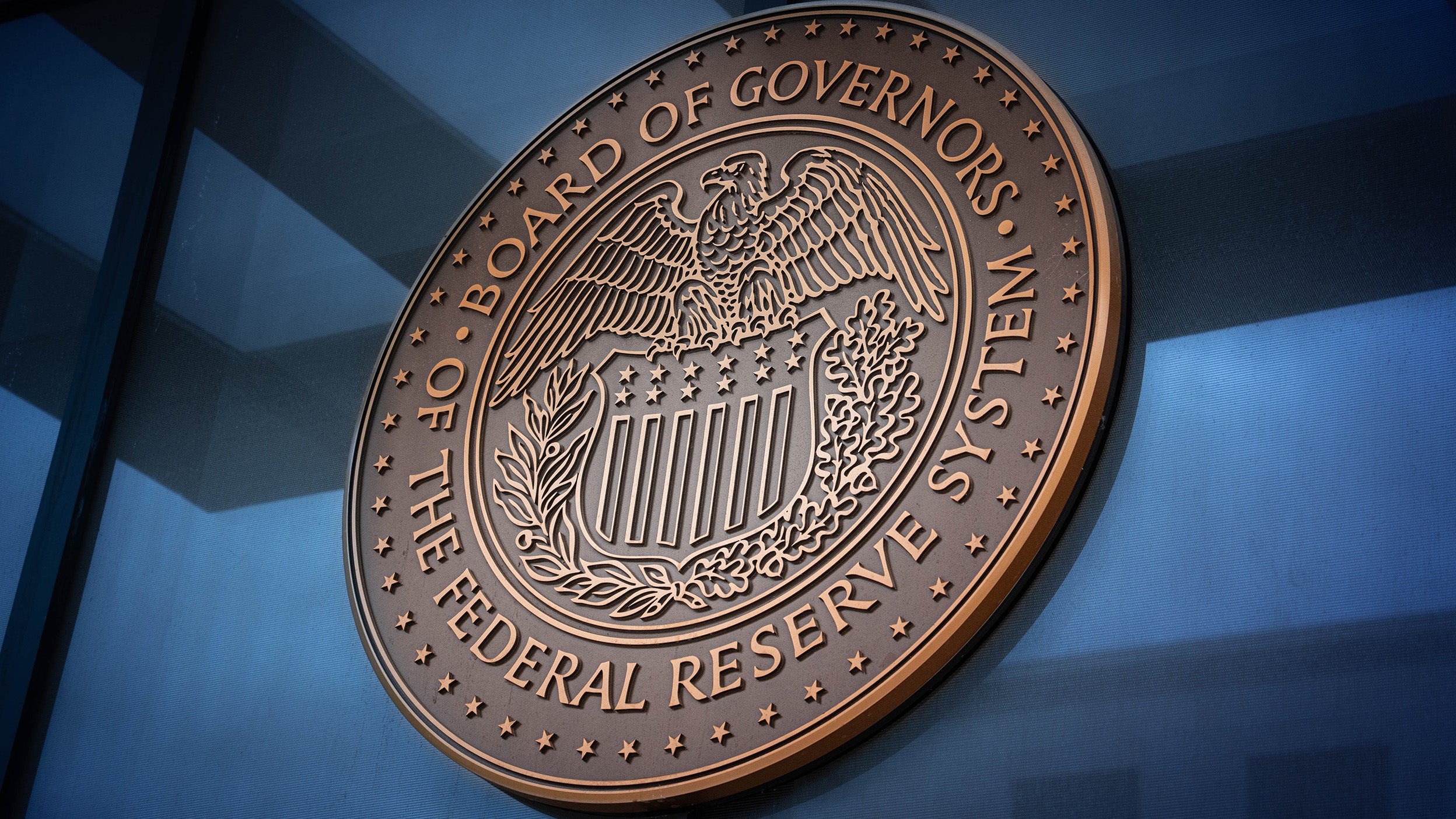
Markets and Economy Navigating Fed monetary policy uncertainty and the markets
A rate cut, which markets are pricing in despite Fed member differences, and an expected improving economy in 2026, could support stocks.

The effects of ongoing tariffs may be starting to show up in the economy. With job growth falling and the price of goods rising, some see the potential for stagflation. But what we’re experiencing is neither stagnation nor high inflation. The topic remains part of the public conversation, and concerns are rising. What is stagflation exactly, and can policymakers do anything about it?
Stagflation is a mashup of the words “stagnation” and “inflation.” Likely coined by British politician Iain Macleod in the 1960s, the term describes the combination of a flat or shrinking economy with elevated unemployment and high inflation. Stagflation took hold in the 1970s when a stagnant US economy saw oil prices skyrocket, fueling inflation across the economy.
This unique economic climate can prove devastating to consumers and businesses and difficult to deal with for governments.
When an economy slows or stops growing, consumers and businesses tend to spend less. Consumers typically buy fewer things and delay large expenses. Businesses often make fewer capital improvements and avoid hiring new staff. Stagnation is a normal part of the business cycle, and while not preferable, won’t necessarily lead to stagflation on its own.
A stagnating economy tends to have low inflation given the pullback on spending. But this doesn’t always happen. If conditions are right, inflation can sometimes rise. Rising prices push up the cost of living. And adding high inflation to economic stagnation raises the potential for stagflation.
The third condition is high unemployment which exacerbates the economic stagnation. Fewer consumers have jobs, and those who do may not feel as comfortable in them. Wages may not keep pace with rising prices, which erodes purchasing power.
A slow-growing economy tends to have low inflation. But with stagflation, the traditional rules of economics don’t seem to apply. Certain conditions can give rise to or exacerbate a stagflationary environment.
Supply shocks refer to a sudden disruption in the availability of key goods and resources. Drastic price increases tend to get passed along to the buyer which can push up inflation. The economy struggles to grow under the additional weight placed on consumers and businesses.
The Federal Reserve (Fed) manages monetary policy to keep prices stable and unemployment low. This difficult balancing act can contribute to stagflation if mismanaged.
In certain circumstances, regulatory and tax changes can help push an economy into stagflation. New regulations can increase the cost of doing business, while higher taxes reduce disposable income. Both can dampen economic activity. While these changes may be necessary in the moment, they can inadvertently lead to stagflation if not carefully balanced.
No economy exists in a vacuum. Global economic factors can contribute to stagflation in many ways.
Stagflation can be challenging for policymakers. Fighting inflation by raising interest rates risks holding back the economy, which contributes to stagnation. Stimulating the economy by lowering interest rates risks raising prices, which contributes to inflation. How might policymakers boost growth, tame inflation, and reduce unemployment at the same time?
The Fed has a few tools at its disposal. The trick is to spur spending and investment without driving up prices. Tweaks to the interest rate can help, along with targeted liquidity measures, such as low-interest loans in certain sectors. Quantitative easing — buying government securities to boost the money supply and encourage investment — is another approach.
The government can help address stagflation with fiscal policies aimed at the root causes. Targeted tax cuts could incentivize companies to hire. Consumer support through social benefits may help consumers redirect spending and lift the economy.
The government might attack inflation with efforts to enhance productivity and reduce costs for businesses. Improved infrastructure and streamlined regulations, for example, could help businesses operate more efficiently and keep prices down.
Global energy prices can factor into stagflation. To counter this risk, the government might consider investing in alternative energy sources and improving energy efficiency.
Stagflation can grow out of global issues. So, maintaining cooperative relationships across borders can help resolve trade disputes, stabilize currency markets, and maintain supply chains.
Consumers tend to face higher prices at the register, not to mention job instability, which may lead them to reconsider spending in the first place. Saving money becomes more difficult. Investors may face multiple challenges.
In a stagflationary environment, inflation eats away at the purchasing power of money. That reduces an investment’s real returns. Bonds and other fixed income investments can be particularly vulnerable if interest payments don’t keep pace with rising prices.
When stagflation sets in, companies may face higher costs and slower growth, which can squeeze profit margins and lead to uncertain earnings. This uncertainty can lead to volatile stock prices if investors sell due to market fears.
Various economic sectors react differently to stagflation. Consumer goods companies might struggle as higher prices prompt consumers to dial back spending, while the energy sector could benefit from rising commodity prices. Technology may face issues if businesses and consumers delay purchases, though cost-saving solutions and essential services may present opportunities.
Investors should be strategic when navigating a stagflationary environment.
By spreading investments across various asset classes, sectors, and geographies, investors can help reduce risk and possibly increase the chances of finding pockets of growth. The mix might include stocks, bonds, commodities, and real estate.
Hedging strategies may help safeguard portfolios from the adverse effects of inflation. Inflation-protected securities, which are designed to increase in value with inflation, help maintain purchasing power. Gold, silver, oil, and other commodities generally do well in inflationary times, as their prices tend to rise with increasing costs.
High-quality companies with strong balance sheets and consistent cash flows are typically better equipped to weather an economic storm. Value investing — finding undervalued stocks with solid fundamentals — may also be a viable strategy.
Certain sectors, like health care, utilities, and consumer staples, are less sensitive to economic cycles. Companies in these defensive sectors tend to have more stable demand often leading to a more reliable revenue stream during stagflation.

A rate cut, which markets are pricing in despite Fed member differences, and an expected improving economy in 2026, could support stocks.

We believe global equities may continue to rise in the new year, and we expect new opportunities to be unlocked as market leadership evolves.

Get insight on the recent sell-off in the artificial intelligence trade, the potential for a Santa Claus rally, and the K-shaped economy.
NA4741779
All investing involves risk, including the risk of loss.
Image: Oscar Wong / Getty
Past performance does not guarantee future results.
This does not constitute a recommendation of any investment strategy or product for a particular investor. Investors should consult a financial professional before making any investment decisions.
In general, stock values fluctuate, sometimes widely, in response to activities specific to the company as well as general market, economic and political conditions.
Fixed income investments are subject to credit risk of the issuer and the effects of changing interest rates. Interest rate risk refers to the risk that bond prices generally fall as interest rates rise and vice versa. An issuer may be unable to meet interest and/or principal payments, thereby causing its instruments to decrease in value and lowering the issuer’s credit rating.
Commodities may subject an investor to greater volatility than traditional securities such as stocks and bonds and can fluctuate significantly based on weather, political, tax, and other regulatory and market developments.
Investing in real estate typically involves a moderate to high degree of risk. The possibility of partial or total loss of capital will exist.
Diversification does not guarantee a profit or eliminate the risk of loss.
The opinions referenced above are those of the author as of August 13, 2025. These comments should not be construed as recommendations but as an illustration of broader themes. Forward-looking statements are not guarantees of future results. They involve risks, uncertainties, and assumptions; there can be no assurance that actual results will not differ materially from expectations.
This link takes you to a site not affiliated with Invesco. The site is for informational purposes only. Invesco does not guarantee nor take any responsibility for any of the content.